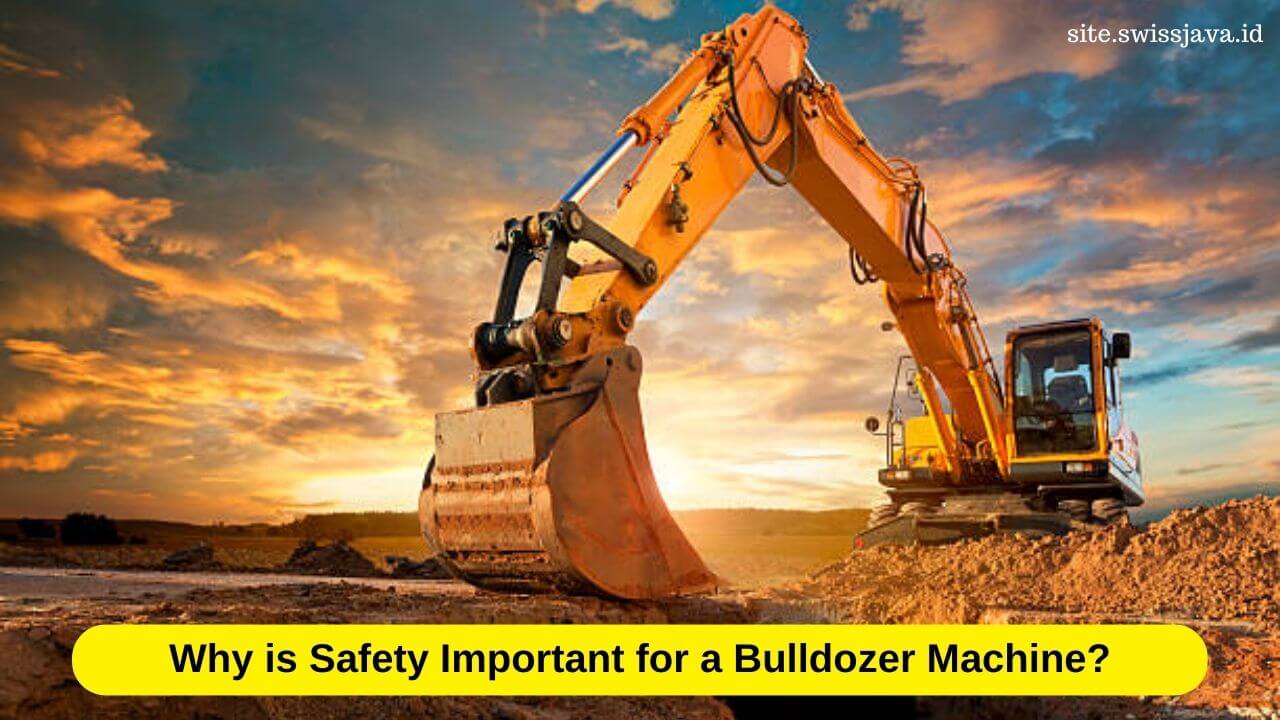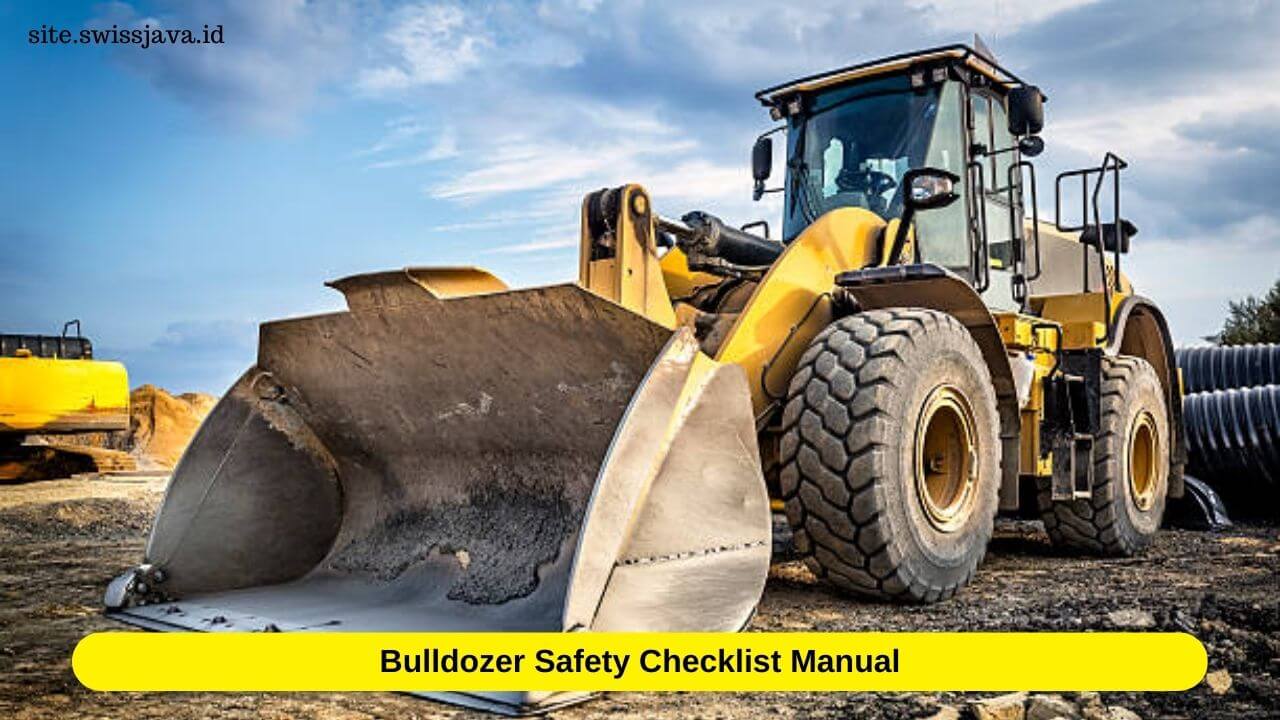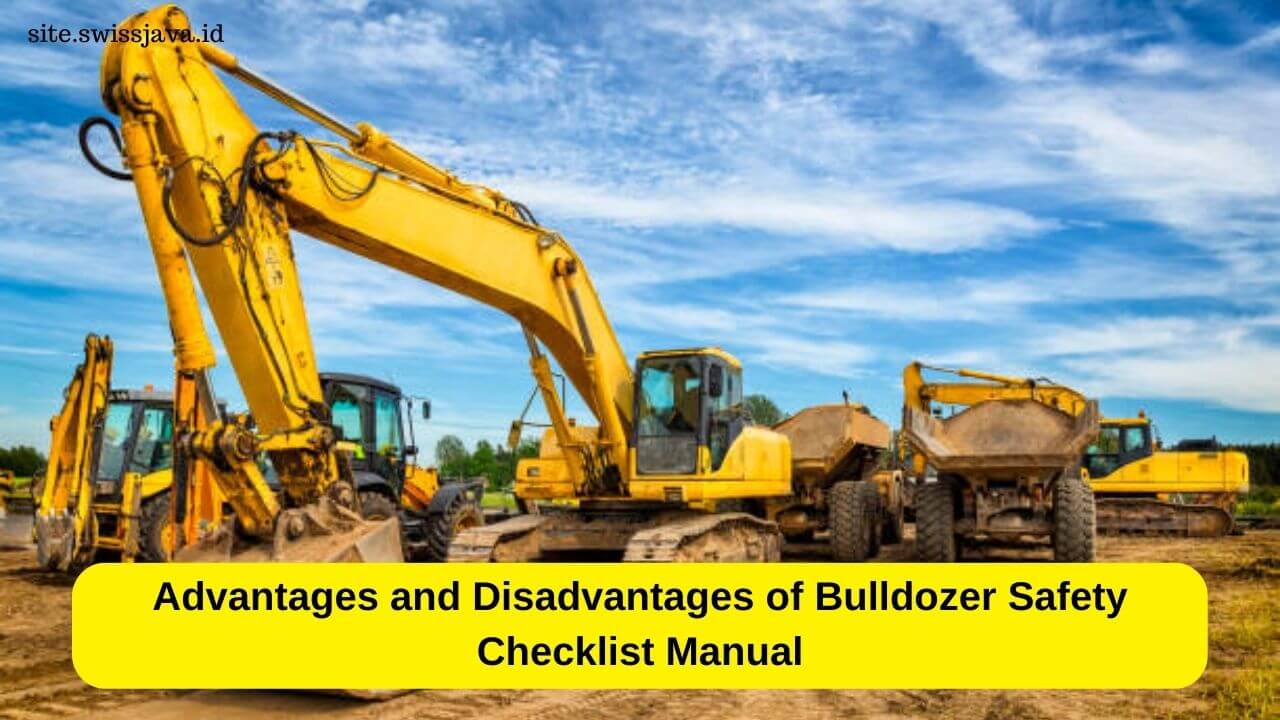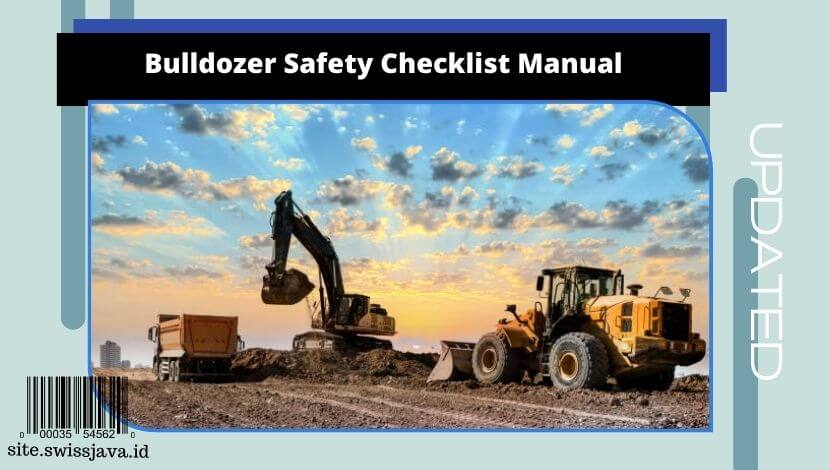Bulldozer Safety Checklist Manual – A bulldozer is a powerful and heavy construction machine equipped with a large metal blade at the front, used for pushing and moving massive amounts of earth, soil, rocks, and debris during construction and excavation projects.
Bulldozers are commonly employed in various industries, including road construction, building demolition, mining, land clearing, and agricultural activities, due to their ability to tackle rough terrains and handle challenging tasks.
The operator sits in a protective cabin, controlling the bulldozer’s movements and blade functions, ensuring precision and safety during operation.
Bulldozers come in various sizes, ranging from small machines used in urban construction to large, heavy-duty models used in mining and major earth-moving projects.
With their immense power and versatility, bulldozers play a crucial role in modern construction and development, making them an essential tool in shaping the landscape and building vital infrastructure around the world.
Why is Safety Important for a Bulldozer Machine?

Safety is of paramount importance for a bulldozer machine due to the following reasons:
1. Operator Protection
Bulldozers are heavy and powerful machines capable of moving large amounts of earth and debris.
Ensuring safety measures are in place protects the operator from potential accidents and injuries that can occur during operation.
2. Worksite Safety
Bulldozers are often used in busy construction sites where numerous personnel and other equipment are present.
Following safety protocols minimizes the risk of collisions, accidents, and injuries to workers and bystanders.
3. Preventing Equipment Damage
Operating a bulldozer safely helps prevent damage to the machine itself, reducing downtime and costly repairs.
4. Avoiding Environmental Impact
Inappropriately handled bulldozers can cause environmental damage, such as erosion or soil compaction.
Adhering to safety practices ensures environmental protection during construction and land-clearing activities.
5. Regulatory Compliance
Many countries have strict safety regulations and standards for operating heavy machinery like bulldozers.
Complying with these regulations is essential to avoid legal issues and penalties.
6. Reputation and Liability
Companies that prioritize safety demonstrate their commitment to the well-being of their workforce and the public.
A strong safety record enhances a company’s reputation and reduces the risk of liability claims.
7. Accident Prevention
Implementing safety measures reduces the likelihood of accidents and incidents, which could lead to property damage, injuries, or even fatalities.
8. Productivity and Efficiency
When operators follow safety protocols, they are less likely to face interruptions due to accidents or injuries, leading to improved productivity and efficiency on the worksite.
9. Employee Morale
A safe work environment boosts employee morale and promotes a positive work culture, contributing to higher job satisfaction and employee retention.
10. Continuous Improvement
Focusing on safety encourages continuous improvement in equipment maintenance, operator training, and overall worksite management.
Read More: 8+ Articulated Dump Truck Terrain Adaptability You Should Know
Bulldozer Safety Checklist Manual

A bulldozer safety checklist manual is a comprehensive document designed to ensure the safe operation of bulldozers and protect operators and other personnel on the worksite.
This manual typically includes the following elements:
1. Pre-Operation Inspection
A detailed checklist outlining the pre-operation inspection process, including checks for fluid levels, brakes, tracks, blades, lights, and safety features.
2. Operator Training
Information about operator training requirements and guidelines to ensure only qualified personnel operate the bulldozer.
3. Safety Procedures
Clear instructions on how to start, stop, and shut down the bulldozer safely, including emergency procedures in case of accidents or equipment malfunctions.
4. Personal Protective Equipment (PPE)
Guidelines on mandatory PPE for operators, such as hard hats, high-visibility vests, steel-toed boots, and ear protection.
5. Safe Operating Practices
A list of best practices for safe bulldozer operation, including proper seating position, maintaining clear lines of sight, and avoiding hazardous maneuvers.
6. Communication
Guidance on establishing clear communication signals between the operator and ground personnel.
7. Load Limitations
Information on the bulldozer’s load limitations and safe handling practices when moving heavy loads.
Slope and Terrain Guidelines: Instructions on safe operation on different types of terrain, including slopes, embankments, and unstable ground.
8. Maintenance and Inspection Schedule
A recommended maintenance and inspection schedule to ensure the bulldozer’s ongoing safety and performance.
9. Environmental Considerations
Guidance on minimizing environmental impact, such as avoiding sensitive areas or implementing erosion control measures.
10. Emergency Procedures
Clear protocols for responding to emergencies, accidents, or equipment failures to prevent further risks and ensure the safety of all personnel involved.
It’s essential to follow the safety guidelines outlined in the bulldozer safety checklist manual rigorously to prevent accidents, injuries, and equipment damage.
Additionally, periodic updates to the manual may be necessary to reflect changes in regulations, technology, or best practices.
Read More: 10+ Motor Grader Road Construction Techniques & Tips Buying It
Advantages and Disadvantages of Bulldozer Safety Checklist Manual

Here are some advantages and disadvantages of bulldozer safety checklist manual, such as:
| Advantages | Disadvantages |
| A well-structured safety checklist manual ensures that all necessary safety measures are considered before operating a bulldozer, reducing the risk of accidents and injuries to operators and other personnel on the worksite | Despite having a safety checklist, human error can still occur. Operators may overlook certain items on the list or skip steps, leading to potential safety risks |
| The checklist promotes consistency in safety practices across different operators and projects, ensuring that all necessary safety checks are conducted uniformly | Generic safety checklists may not address specific hazards or risks unique to a particular worksite or project, requiring additional customization to ensure comprehensive safety measures |
| Following a comprehensive safety checklist helps companies and operators comply with safety regulations and industry standards, reducing the likelihood of legal and regulatory issues | Going through a detailed safety checklist can take time, especially during pre-operation inspections, which might lead to delays in starting the work |
| The safety checklist manual can serve as a valuable training resource for new operators, helping them understand the critical safety procedures and best practices when operating a bulldozer | In some cases, operators may become complacent if they rely too heavily on the checklist and assume that merely completing the list guarantees safety, leading to a lapse in situational awareness |
Overall, the advantages of a bulldozer safety checklist manual outweigh the disadvantages, as it serves as a critical tool for promoting safety, compliance, and consistent best practices.
However, it is essential to continuously review and update the checklist to address specific risks and ensure its effectiveness in preventing accidents and maintaining a safe working environment.
Regular training and reinforcement of safety protocols can also help mitigate human errors and potential complacency.
Read More: 5+ Paver Machine Installation Process to Ensure its Functionality
Conclusion
A bulldozer is a heavy construction machine equipped with a large metal blade at the front, primarily used for pushing and moving earth, debris, and materials during various construction and land development projects.
Bulldozers are essential in tasks such as grading, leveling, excavating, and clearing land, making them a crucial piece of equipment in road construction, mining, agriculture, and other industries.
With their immense power and versatility, bulldozers are capable of handling challenging terrains and heavy loads, making them indispensable in shaping landscapes and creating the foundation for various infrastructure projects.
